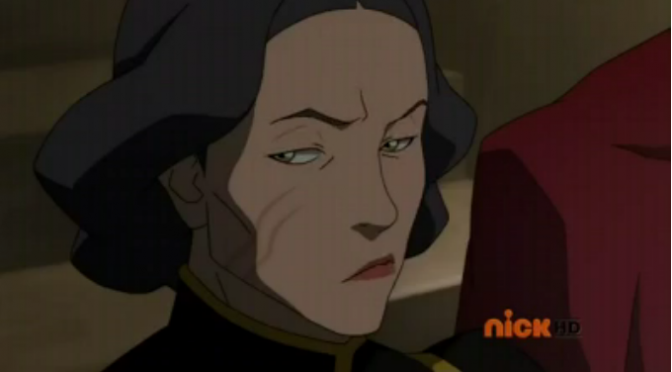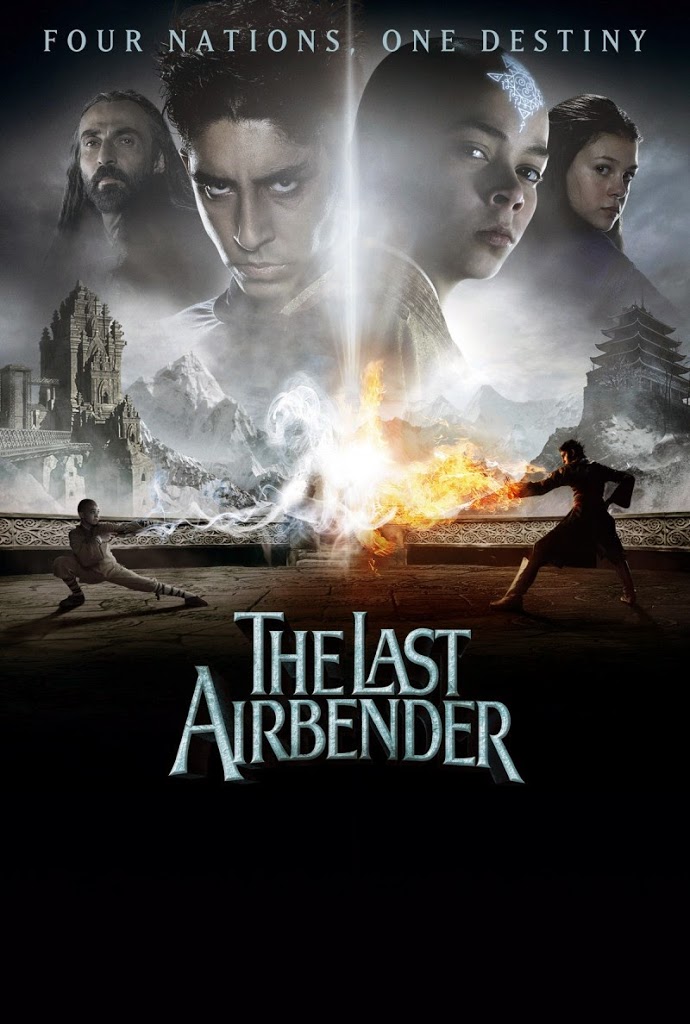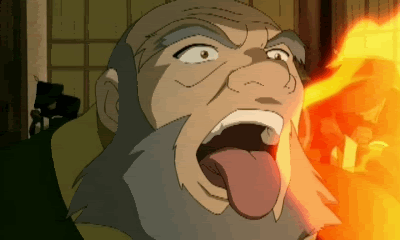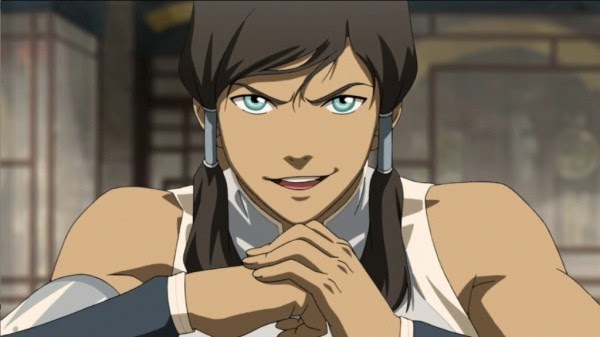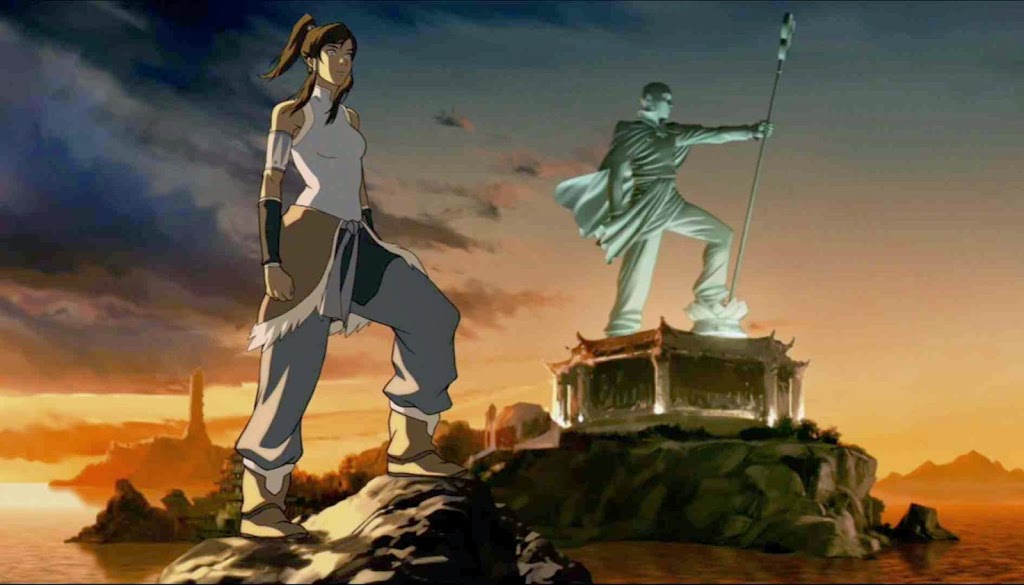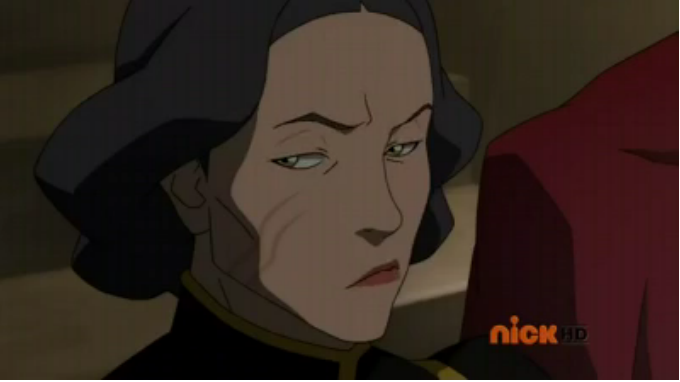Years ago, the basic cable channel Nickelodeon took a risk on an animated series brought to them by a pair of guys with a 10 minute pilot film produced by a Korean animation studio. The product they got was Avatar: The Last Airbender – one of the most original American animation projects in decades. Frankly, Nickelodeon executives weren’t sure what they had at the time. So it made sense that they only paid only for the first 7 episodes with further episodes to be determined as they went. It soon extended the order to 14 and, before long, ended up with 60 episodes for a series that had been an unknown quantity not long before.
It was a smash hit.
Nickelodeon suddenly had a series that was regularly garnering 4 million viewers an episode, with the final episodes reaching a spectacular 5 million viewers – unheard of for basic cable, especially animation. With charm, style and a more inclusive world view featuring the cultures of many races and religions, Avatar was easily one of the biggest surprise hits of its time. And it came to an end on an incredible high note, leaving everyone, especially the fans, wondering what was to come from the creative minds that brought it to the screen.
Then there was an unfortunate detour: a man who shall remain nameless was put at the helm of a live action movie. And, in ironic fashion, despite being of Indian descent, the man at the helm decided to make decidedly darker characters surprisingly white. Combined with a bad screenplay, stilted dialogue, horrible acting, broken direction, and a hefty dose of exposition – the movie bombed. The very feel of the franchise was gone, washed away in the director’s ego and mismanagement of the film. And, worse, the producers mismanaged it as well by handing it to him in the first place. Fans were, needless to say, not happy.
But then good news was on the horizon and the original creators were back with a brand new story in the same world. They introduced us to Korra, the next Avatar and the reincarnation of Aang, the protagonist of the first series. Korra was tough, energetic, enthusiastic and brimming with personality. She was a strong female character done RIGHT and with a touch of understanding as to who the audience was and where the franchise could go to keep feeling fresh.
Unfortunately, Nickelodeon didn’t see it this way and decided that the series that brought them 5 million viewers the last time they aired it suddenly wasn’t trustworthy. They started to throttle the production of the series and downgraded it into a mini-series before eventually realizing this new chapter was just as popular as the last and green-lighting production of a full series.
Why did they strangle their franchise with indecisiveness? Well, according to at least two people behind the scenes: because Korra was a girl.
And the comedy of errors began…
How Casual Sexism May Destroy A Franchise
After a stellar first series, fans were excited to see the Avatar world return to its roots rather than being abused at the hands of egotistical directors with limited range. The first shots of Korra’s world and the summaries of where the world was going were enticing. The series was moving forward with a female protagonist, a world further into the future and a political and cultural landscape that wasn’t quite the same anymore. The sequel was slated to be a mini-series, so everyone knew that each episode had to be packed with everything they loved from the original. With enthusiasm, Avatar once again pulled in over 4 million viewers.
And people started to wonder just why exactly it was a mini-series rather than a full series.
The truth was actually not revealed until long after the show had been confirmed to be a (repeat) success. According to one of the writers/co-creators of the series, Bryan Konietzko, and the animation director, Yoo Jae-myung, Nickelodeon was uneasy about the concept of continuing the series with a female lead. According to Nick’s conventional wisdom, a female lead would bleed viewers fast and the series wouldn’t be successful. Not only did they express this with a limited order but eventually, according to the animation director, stopped production entirely. Basically, it was a mini-series because Nick was confident that Avatar would fail with a teenage girl as the protagonist.
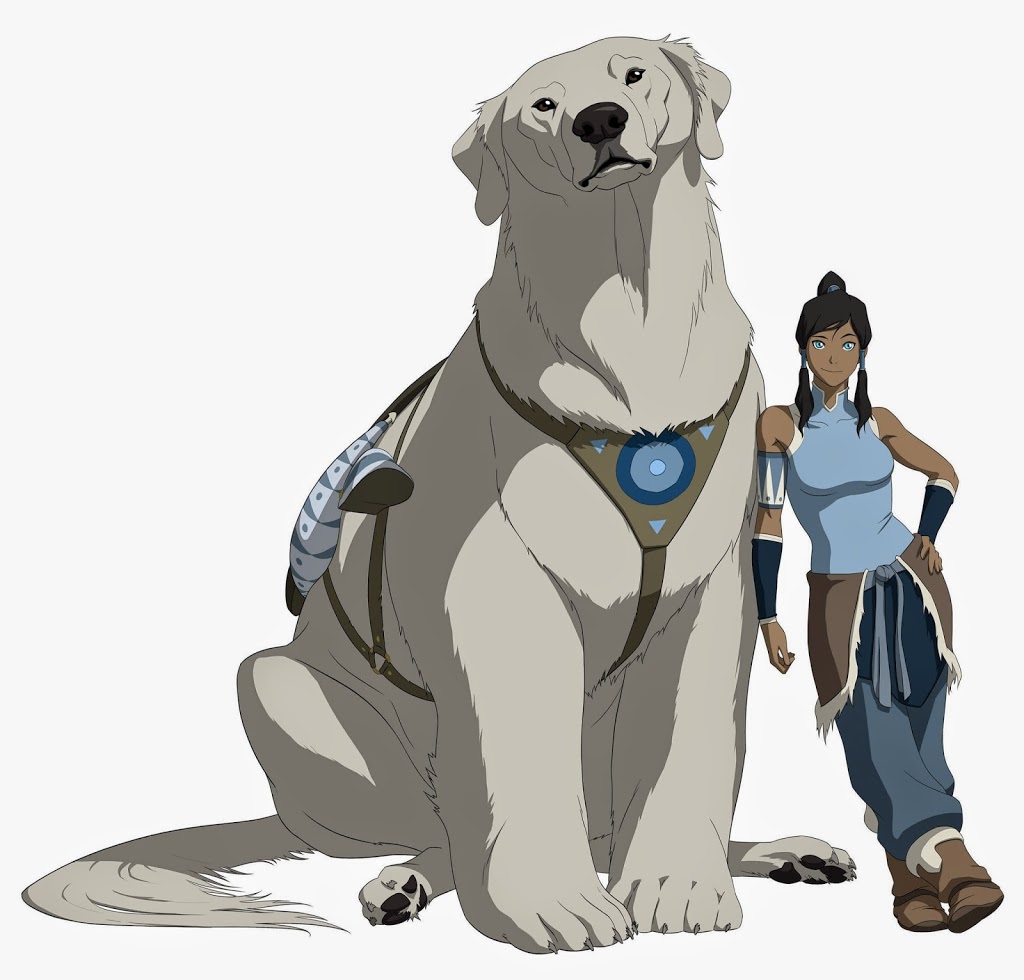 |
| Regardless of Polar Bear Dog content |
The problem with this is that they were dead wrong and Korra was awesome. But damage had already been done. The writers, having been informed they were getting only a mini-series after a temporary production stop, were writing for a tightly packed 13 episode season that had no breathing room. To make sure that characters were developed as well as normal and felt to be paced naturally, they were forced to make some sacrifices. One of the things most notable was that certain elements felt a bit too rushed – the romance angle with the protagonist, the reveal of the major twists, and the ending were the major critiques laid at the show. But this is what happens when you force a series with heavy character and world building down to 13 episodes.
But that wasn’t enough mismanagement for Nick. Having seen the error of their original production order, they then promptly asked for another 13 episodes. The writers were suddenly put into a ridiculous situation: they’d tied up all of their loose ends (in decidedly rushed fashion) in order to fit a complete plot into the compressed order they’d been handed. Suddenly they were being asked to do a complete series again rather than just a mini-series and they’d just finished cleaning the slate. So the creators had to fly by the seat of their pants to construct a new story that could follow the one they’d just wrapped up.
 |
| Deus ex OhCrapWeGottaDoSeason2 |
Following the common wisdom of all writers, the only method for this was to deconstruct their status quo. This is a horrible mistake that almost every writer makes. You’d know it as “sequelitis”: the phenomenon where a sequel has to wreck the status quo of the previous movie in order to bring itself back to square one. The result was that the second season of Korra was a bit hit and miss, spending a lot of time just wrecking the progress made in the original season rather than progressing a story of its own. People saw it as directionless, confusing and a little regressive. But what didn’t help matters any was that Nick, despite having caused this mess, didn’t advertise the season effectively. Even at the first episode of the second season, before the sequelitis was apparent, the viewership had been cut in half.
So, going into Season 3, Korra had an uphill battle already. The new status quo had been established, everything was ready to get moving again, but the prior season (of 13 episodes) was not as successful as all the previous seasons. This was not a good time for Nick to mismanage it again – but they did. The first problem was that Nick released their trailer for the third season at an odd time, in fact, according to some reports, earlier than they planned to do it. Then, some episodes of the season were released early online, resulting in diminished viewership. But, the real problem was that the premiere date ambushed a lot of people.
Of course no one was going to watch the show if they didn’t know when it was coming on.
The season premiere featured 3 episodes back to back. They were good, feeling like a more solid start than season 2 had. But after that solid start, the next week was suddenly a hiatus with reruns. After one week, it was already on hiatus. From then on, every week featured two new episodes back to back once again. They quickly burned through 8 of 13 (again) episodes in a little over a month. After the 8th episode, they then removed the show from the air and put it to online only because, surprise, with no one knowing when the episodes were on there was a sudden upswing of people watching it online.
Now Korra sits online and we’re left wondering if there will be a fourth season, let alone whether it will ever get screened on TV rather than the internet. And this was a problem easily avoided if the network had just had more faith in the series than they had. But they didn’t, they never did, they started the entire process with no faith in it and they continually did everything they could to fulfill their prophecy. Sadly, this isn’t something unique to television, anyone who follows games or movies can tell you that advertising tends to become soft for action-oriented projects with a female lead.
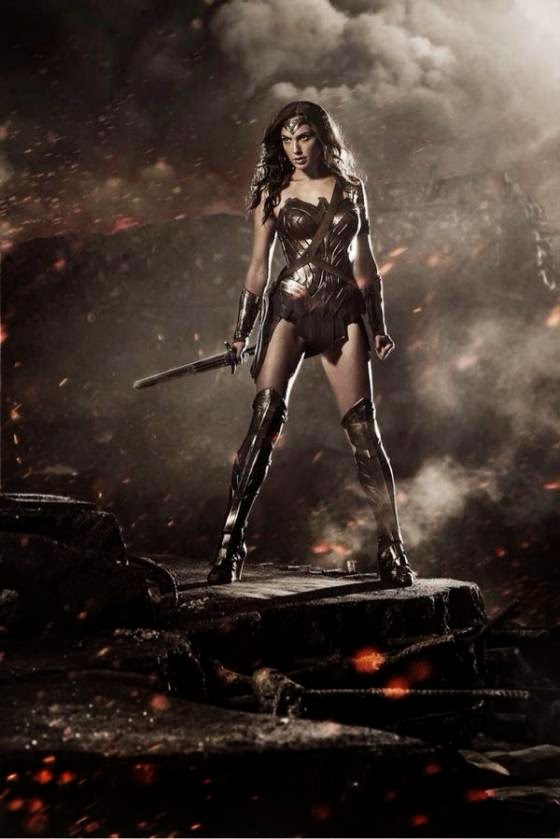 |
| Which is why it took two men for Wonder Woman to get this much. |
What can we learn from this, though? Is it possible to work with these conditions so that we’re not sucked into the same traps? I’d like to think we can, but it requires a great deal of adaptation and preparation on the part of writers and executives both (even though executives could solve this by just not having their heads up their own ass).
First, never let the network control your pace to the point of damaging your product. If your story cannot be told completely in 13 episodes without causing some rushing, don’t do it. If you think there’s a chance the show could be successful despite the network’s issues, don’t tie up all of your loose ends. Tie up just enough plot elements to provide a satisfactory conclusion without closing all avenues for continuing if they change their minds.
I know this sounds counter-intuitive to a writer’s natural instinct. You want to leave the story completed and your audience satisfied. But the truth is that you need to have more faith in the series and be willing to put your money down on the success. If THEY happen to be right and no one watches the show, you don’t really lose anything because no one has watched it. If YOU happen to be right, they’re going to want to have more episodes and that means continuing with what you’ve left over.
The network isn’t going to accept a cliffhanger, of course, but there’s a balancing act to be had. Clear up the primary plot of the season, not all of the subplots. For instance, in Korra’s case, it would have been fine to put the villain in prison and have Korra learn Airbending. However, making her fully aware of all of her Avatar skills, wrapping up her relationship plotline and bringing a definite conclusion to the villain’s story was a bit too much. You may want to avoid the super happy complete ending.
Second, if you do happen to wrap up all of your loose ends, do not try to deconstruct your work. I know this is also instinct for writers to start off your characters at square one, but the fact of the matter is that’s what damages sequels and we all know it. No one wants to watch a story repeat itself or regress back to an inferior state. If you’re going to follow your work with a sequel, build UP – not down. Make the scope bigger and build out from what you established at your finale rather than sabotaging your own work in order to get back to the comfortable space of square one.
Third, and this is for executives, when you have a show struggling – advertise it, don’t let it die on the vine. Yes, it seems like a risk when you’re working only on the short term ratings of a poorly received season. But if you looked past that season you’d notice that Korra spent its first season above 3 and 4 million viewers. This is what we call a hit and when you have a hit you try to make sure that you don’t accidentally kill the golden goose.
Fourth and final: if you happen to put the show strictly online, try not to screw up distribution there too. For instance, it would be helpful if you post the episodes online IN ORDER
It would also be helpful if you managed to make the episodes available in all regions where your decision may have had an impact.
And it would especially be useful to tell people that you’re doing it, rather than letting them find out from news sites and the fucking sponge appearing at the bottom of the screen that lets them know it’s suddenly Spongebob time again.
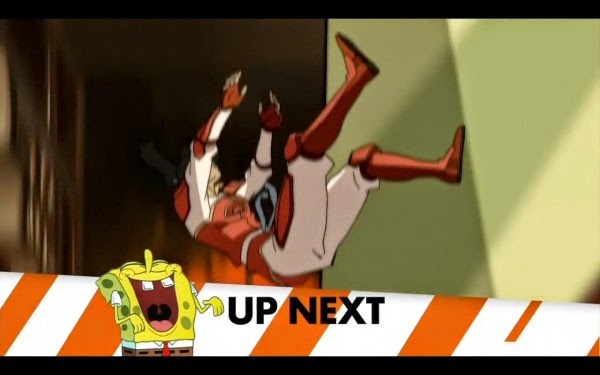 |
| Dramatization/Meme |
The truly sad part of all of this is that this was a show worth your support. People are going to watch this online and they are going to love the third season because it was, IS, a better season. But there’s a good chance a lot of people may never get their chance to see it because of the horrible mismanagement created by a group of peoplewho just didn’t know what they had.
This was a show that people of all genders and ages could like. In fact, this was a series that people loved. And, while Korra wasn’t as well loved as The Last Airbender, it was starting to get the momentum to become as loved as its predecessor. Hell, they were looking to be setting up a relationship that was actually worth backing.
And then you fucked it up.
(I write books. I would kill to have even a fraction of the viewership that Korra has. But, then again, I’m not a big shot TV executive- so what do I know? BTW, I know the video above doesn’t work for a lot of you, that was the joke. But in case you wonder what it is, here’s a version filmed with a potato.)


